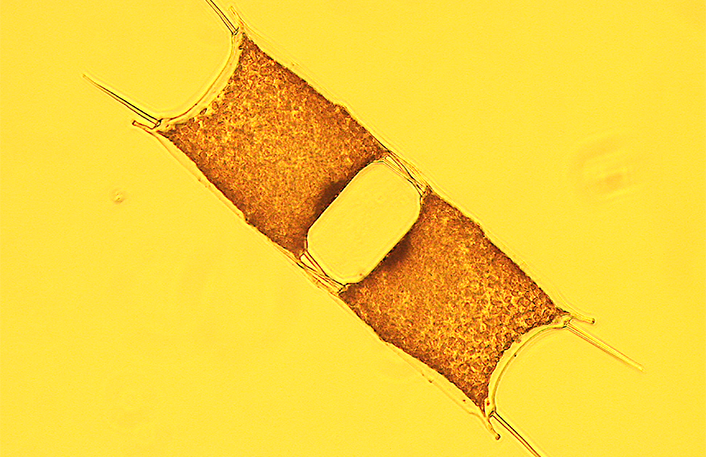As part of “The Breakdown,” RI C-AIM’s student newsletter, Diana Fontaine, doctoral candidate at URI’s Graduate School of Oceanography, talks about her background and research as a marine biologist with C-AIM investigator Dr. Tatiana Rynearson, her advisor.
My interest in marine biology began in a high school class during our dissection of a squishy sea cucumber. After realizing I could become a marine biologist, I decided to move across the country to pursue a degree in marine science at the University of San Diego. During the last two years of my undergraduate career, I worked in a larval ecology lab. Summertime meant keeping a close eye on tide tables to know when to collect my barnacle settlement plates in the rocky intertidal zone.
After graduation, I accepted a job as a plankton analyst in the Marine Invasions Lab at the Smithsonian Environmental Research Center (SERC) in Edgewater, MD. There, I spent two years studying phytoplankton in ballast water of cargo ships and gaining experience with phytoplankton taxonomy and culturing techniques. I then decided to go to graduate school and found myself back in my favorite place, New England, at URI Graduate School of Oceanography with Dr. Tatiana Rynearson.
As a second year doctoral student, my work involves using genetic techniques to study phytoplankton diversity (Rynearson et al. 2020). In collaboration with the Northeast US Shelf Long-Term Ecological Research site, I measure size-fractionated primary production rates across a spatial gradient from Narragansett Bay to the shelf-break. I am particularly interested in understanding how environmental stressors associated with climate change affect phytoplankton community dynamics and overall ecosystem function. I value science communication and enjoy my role as a student mentor and pen-pal in the Letters to a Pre-Scientist Program where I inspire youth to engage with science.
During my free time, I love making pottery and being outdoors either at the beach or in the mountains of New Hampshire.


 RI NSF EPSCoR is supported in part by the U.S. National Science Foundation under EPSCoR Cooperative Agreements #OIA-2433276 and in part by the RI Commerce Corporation via the Science and Technology Advisory Committee [STAC]. Any opinions, findings, conclusions, or recommendations expressed in this material are those of the author(s) and do not necessarily reflect the views of the U.S. National Science Foundation, the RI Commerce Corporation, STAC, our partners or our collaborators.
RI NSF EPSCoR is supported in part by the U.S. National Science Foundation under EPSCoR Cooperative Agreements #OIA-2433276 and in part by the RI Commerce Corporation via the Science and Technology Advisory Committee [STAC]. Any opinions, findings, conclusions, or recommendations expressed in this material are those of the author(s) and do not necessarily reflect the views of the U.S. National Science Foundation, the RI Commerce Corporation, STAC, our partners or our collaborators.